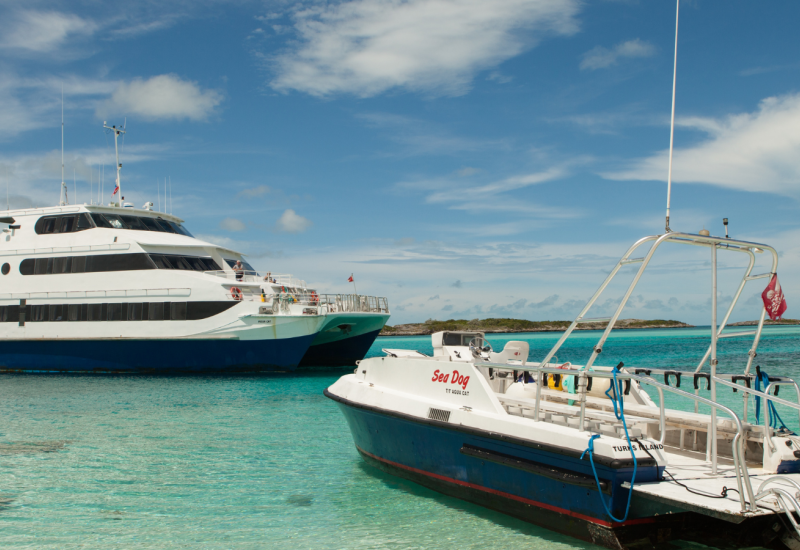Seven Must-Dive Sites in Ireland
Looking for an island getaway that lets you alternate between wreck diving and epic animal encounters? Look no further than Ireland!

Joost van Uffelen/Shutterstock.comSeaweed swings in the shallow coastal waters of the Atlantic ocean on the Irish west coast.
You read that right — the Emerald Isle may not be the first place that hops to mind when you’re envisioning an island dive trip, but it has sites that inspire. Even Jacques Cousteau was touched by the area’s haunting elegance, purportedly saying that “some of the best diving in the world is at the northern side of the Dingle Peninsula, where the Atlantic Ocean meets the Brandon Mountains in a landscape of exceptional beauty.”
The shore is stocked with wrecks thanks to the region’s tricky seas and choppy topography. If you prefer diving with animals, the Gulf Stream flowing past the west side of the island brings seals, dolphins, and the occasional whale within reach. Keep the unpredictable waters in mind when planning a trip to Ireland; make sure to get a local site orientation before diving to make sure you are prepared for the conditions.
Here are seven dive sites to keep in mind the next time you’re itching to kit up in Ireland:
1. MV Kowloon Bridge
At over 900 feet long and holding 165,000 tons of iron ore and 2,000 of bunker oil when it sank, the MV Koowloon is the largest wreck in Europe and the largest by tonnage in the world. It sank two miles off of Banty Bay in 1986, where it had stopped for emergency repairs. The ship was forced to leave the bay before the cracks in its hull were fixed to avoid collision with another ship. The crew was rescued via airlift when the boat began to sink, but tugboats could not drag the boat back to port. It floated unmanned for several months until hitting rocks, breaking into several pieces, and sinking. The oil from the ship began leaking several days later, causing considerable environmental damage.
Local divers say ocean life has since rebounded. In addition to offering the chance to explore one of the world’s most substantial wrecks, the site features anemones, wrasse, and pollack. Due to the size of the wreck and the angle at which it landed, divers can choose from a variety of depths, from 20 to 105 feet. Tides can be strong in the area, so this can be a more advanced dive.
2. Dublin Bay
As you drift dive around the local reefs, keep your eye out for the local grey seals. They’re a fan of sunbathing on the rocks on the northeast side of Dalkey island - so much so the area’s nicknamed Seal Bay! Local divers also frequently encounter sponges, anemones, crabs, lobsters, and a variety of fish.
3. Blasket Island

Odin M. Eidskrem/Shutterstock.comA grey seal inside a wave about to break on the beach of Blasket Island, Ireland.
Whether you’re looking for wrecks or wildlife encounters, you can find it on Blasket Island. For wreck diving, search out the USS Quebra, a nearly 400 foot wreck that settled between 50 and 89 feet deep after striking rocks in 1916. You also have the chance of running into playful seals at the appropriately named Seal Cove.
4. Diamond Rocks
Not all that glitters is gold - sometimes it’s quartz. The quartz-filled rocks among the reefs sparkle in the sun, giving the site its name making it one of the most popular dive spots in Ireland.
5. Fanore

Joost van Uffelen/Shutterstock.comA bottlenose dolphin swims with a snorkeler in the green waters of Ireland.
Yes, you can dive with dolphins in Ireland! Fanore in County Clare offers a reef about 165 feet off the shore, and, thanks to the Gulf Stream, dolphins love to play in these waters.
6. Torrey Island
A highlight of this island’s dive scene is the HMS Wasp. Nestled at 50 feet in a sandy seabed, two cannons are still visible on this 1884 wreck. Wildlife sightings in the area include dolphins, whales, and basking sharks.
7. Killary Fjord

Bernd Meissner/Shutterstock.comKillary Fjord, Connemara National Park
If wrecks, shore dives, and animal encounters aren’t enough for you, there’s always the Killary Fjord. Sandwiched between Mweelrea and Maumturk, the fjord’s depth reaches 148 feet. Underwater sites include the anemone-coated Julia T, a supply vessel that stands up straight at 89 feet, and walls on the north shore that house lively marine life.










